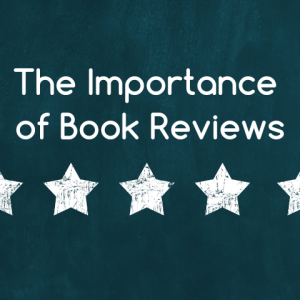Many authors don’t realize that effective front and back matter can boost a book’s discoverability and sales. It’s not a topic you hear about often, but well-presented front and back matter are important finishing touches that can help your book stand out in today’s competitive marketplace. This guide to front and back matter will help you organize each section properly and understand best practices for content and optimization.
Why Front and Back Matter, well, Matter!
Your book’s front matter introduces readers, librarians, reviewers, and bookstore buyers to your fiction or nonfiction book. It offers important cataloging information and metadata (such as your ISBN), which are used to place your book in the right categories in the massive online databases used by book retailers, librarians, bookstores, search engines, and more. For readers, front matter can also provide important context about the subject of the book. Back matter, on the other hand, improves, supplements, and further explains the details surrounding the book and author. It’s a great opportunity to share more about your topic or story as well as offer additional resources. This applies to both fiction and nonfiction. Per publishing standards, each section (besides the copyright page) will begin on the right-hand page during your book’s interior layout process.
Front Matter
Front matter is the information located at the beginning of a book—before the body text (main content). Front matter can consist of several sections—some required, others optional.
Praise Page (optional)
If your book or any of your previous books have been critically reviewed, add those reviews to your praise page. Quotes from esteemed publications and/or influential reviewers in your genre (fiction) or on your topic (nonfiction) are well-suited for a book’s praise page. Make sure quotes are short and the reviewer’s full name and professional title is listed. Praise pages are not the place for reader reviews.
Title Page (required)
Your title page should include your book’s full title and subtitle as well as your author name. Each should appear exactly as it appears on the book’s front cover. Some authors also include their publisher’s name, location, and logo. Alternatively, this logo can be added to the copyright page or both pages, if you prefer. If you don’t have a praise page(s), the title page will be the first page of your book.
Copyright Page (required)
The copyright page is found on the back of the title page. The copyright page consists of cataloging information like the ISBN for each format of the book, edition date, printer, publisher, PCIP block (optional) and the copyright notice (“All rights reserved”).
Remember to also provide your official website URL to inform readers of your online presence. This makes it easier for them to discover more about you and any other books you might have written as well as join your mailing list.
Dedication and Epigraph (optional)
Dedications follow the copyright page, are written in first-person, and should be very short (90 words or less). An epigraph is a quotation from another piece of work. If you have both, the epigraph should go on the page directly following the dedication. Epigraphs can also be added to the beginning of each chapter below the chapter name.
Table of Contents (optional)
If you decide to include a table of contents (TOC) in your book, remember to list every chapter heading. If you are working with a professional print designer—which we highly recommend—page numbers will be added to each chapter heading in your TOC by the designer. Neither eBooks nor audiobooks have page numbers, but both can still have TOCs. The TOC should list both front and back matter sections as well.
Fiction authors will sometimes forgo a TOC in order to get the reader into the book’s main story as quickly as possible. However, if you are publishing a nonfiction book, we highly recommend a detailed TOC. This allows readers to quickly identify the topics covered in your book and encourage them to buy.
Foreword and Preface (optional)
A foreword is a short introduction to you and your book written by a well- known person. This might be a genre influencer, authority in your field, or some other notable person. Having a recognizable name introduce your book is a great way to boost your reputation and the book’s public profile. The foreword should be signed by the person who wrote it. The place and date it was written are also often included.
A preface, on the other hand, is written by the author and often shares the book’s origin story. Though a signature is not required for a preface, authors have the option to sign their name as well as add the place and date where the preface was written.
Introduction (optional)
More common for nonfiction than fiction titles, an introduction can provide context and a useful overview for readers. It can orient readers and let them know whether the book is for them or not. In nonfiction, introductions often say, “This book will be useful to readers looking to….”
Prologue (optional)
Not as popular today as in the past, a prologue is found primarily in works of fiction. It sets the scene of the story and is often told from the main character’s point-of-view.
Back Matter
Back matter comes after the body text (main content) of the book. Most back-matter sections listed below provide additional content and resources for interested readers. Again, each item is listed in the order it should appear and is marked as optional or required.
Epilogue or Excerpt from Forthcoming Book (optional)
After writing a work of fiction, you may have an epilogue that concludes the story. This could be a scene or more that shows the fate of the story’s characters, thereby wrapping up some of the main themes or plot points of the book.
At Bublish, we encourage our series authors to add the first chapter of the next book after the end of the story as a hook to encourage readers to buy or preorder the next book in the series. This can be a very powerful marketing tactic. If you’re just starting a series, you can also include the first chapter of the first book of the new series.
Afterword (optional)
This section can be written by you as the author or someone else. The afterword can explain your reasons for writing the book or how you developed your characters, setting, or story ideas. The afterword page is also known as the ‘postscript’ and can be shortened as ‘P.S.’ (from the Latin phrase “post scriptum”).
Acknowledgements (optional)
Acknowledgements can be found on either the front or back matter and can span one to two pages. Written in first-person, this is where authors can shine a light on the people who helped bring the book to life. It’s a gesture of appreciation and recognition. If you’re adding the acknowledgements in the front matter, it should go after the dedication, but before the foreword/preface.
Author Biography (optional)
This is typically a half-page of text, often paired with a professional author headshot. It is written in the third person and tells the reader about the author’s life and major accomplishments, etc. The text also often invites readers to visit the author’s website and/or social channels. If an author’s biography is already on the back cover of a paperback or the flap of a hardcover dust jacket, there is no need to duplicate the author biography inside the book.
Appendix (optional)
The appendix accommodates any additional information concerning your book, such as citations, references, and other relevant or supplementary reading materials. This component is mainly vital in nonfiction books to emphasize credibility and bolster research.
Glossary (optional)
A glossary is a section that readers can refer to in order to understand certain words or phrases used in the book. It includes definitions and translations of uncommon, specialized, and new terms. The glossary acts as a personalized, book-specific dictionary.
Bibliography and/or Endnotes (optional)
For nonfiction books, specifically, it can be important to indicate the sources used for in a bibliography. This can strengthen the author’s authority on the book’s subject matter. The bibliography sources can be organized alphabetically or based on relevance, theme, or topic. If you’ve used endnotes throughout your book, the list of noted sources should be added to the endnotes section in a numbered list in order of appearance. Endnotes can also appear at the end of each chapter. In this case, the endnotes for each chapter should start at one. Endnotes should be hyperlinked in the eBook format.
Conclusion
Organizing the book’s front and back matter according to best practices is a great way to showcase your professionalism as an author. This can make a strong, positive impression on readers. Some front and back matter sections are also effective marketing tools, pointing readers to your website, social media, and other books you’ve published. This can help you grow your email list, expand your social presence, and encourage readers to discover more about you and your work. Make sure your front and back matter meets publishing standards so you can capture your audience’s attention from the very first page.




